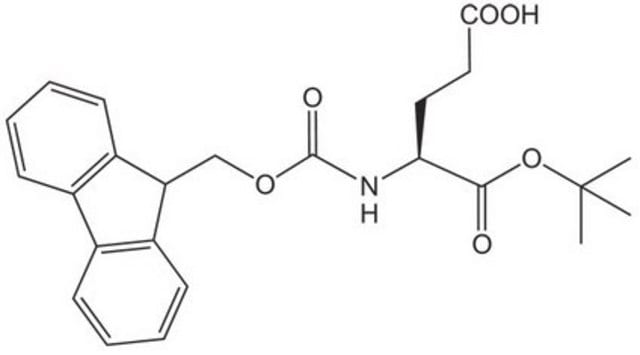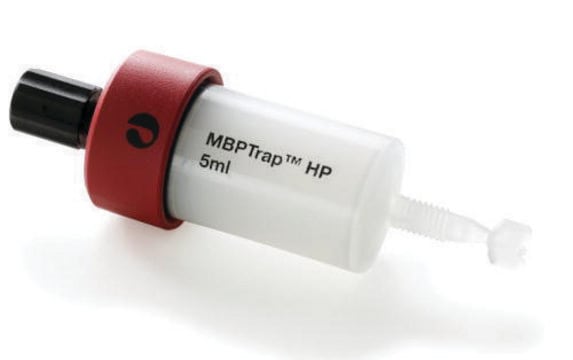95003
{2-[2-(Fmoc-amino)ethoxy]ethoxy}acetic acid
≥95.0% (HPLC)
Synonym(s):
8-(Fmoc-amino)-3,6-dioxaoctanoic acid
Sign Into View Organizational & Contract Pricing
All Photos(1)
About This Item
Empirical Formula (Hill Notation):
C21H23NO6
CAS Number:
Molecular Weight:
385.41
MDL number:
UNSPSC Code:
12352106
PubChem Substance ID:
NACRES:
NA.21
Recommended Products
Quality Level
assay
≥95.0% (HPLC)
form
powder
reaction suitability
reagent type: cross-linking reagent
SMILES string
OC(=O)COCCOCCNC(=O)OCC1c2ccccc2-c3ccccc13
InChI
1S/C21H23NO6/c23-20(24)14-27-12-11-26-10-9-22-21(25)28-13-19-17-7-3-1-5-15(17)16-6-2-4-8-18(16)19/h1-8,19H,9-14H2,(H,22,25)(H,23,24)
InChI key
XQPYRJIMPDBGRW-UHFFFAOYSA-N
Other Notes
Hydrophilic, heterobifunctional spacer
Storage Class
11 - Combustible Solids
wgk_germany
WGK 3
flash_point_f
Not applicable
flash_point_c
Not applicable
ppe
Eyeshields, Gloves, type N95 (US)
Choose from one of the most recent versions:
Already Own This Product?
Find documentation for the products that you have recently purchased in the Document Library.
Customers Also Viewed
Christian Risinger et al.
ACS infectious diseases, 3(5), 360-367 (2017-02-28)
Detection of type-specific antibodies is an important and essential part of accurate diagnosis, even in silent carriers of herpes simplex virus (HSV)-1 (oral) and HSV-2 (genital) infections. Serologic assays that identify HSV-1 and HSV-2 type-specific antibodies have been commercially available
A.M.P. Koskinen et al.
Bioorganic & Medicinal Chemistry Letters, 5, 573-573 (1995)
Simone Fortunati et al.
Sensors (Basel, Switzerland), 19(3) (2019-02-02)
A new amperometric sandwich-format genosensor has been implemented on single-walled carbon nanotubes screen printed electrodes (SWCNT-SPEs) and compared in terms of performance with analogous genoassays developed using the same methodology on non-nanostructured glassy carbon platforms (GC-SPE). The working principle of
Magdalena Czuban et al.
Materials science & engineering. C, Materials for biological applications, 116, 111109-111109 (2020-08-19)
Implant-associated infections present severe and difficult-to-treat complications after surgery, related to implant biofilm colonization. Systemic administration of antibiotics cannot reach sufficient concentrations at the infected site and may be toxic. Here we describe how mussel-inspired dendritic material coated on a
Mohadeseh Dastpeyman et al.
Frontiers in chemistry, 9, 627329-627329 (2021-03-20)
Cell penetrating peptides (CPPs) are being increasingly used as efficient vectors for intracellular delivery of biologically active agents, such as therapeutic antisense oligonucleotides (ASOs). Unfortunately, ASOs have poor cell membrane permeability. The conjugation of ASOs to CPPs have been shown
Our team of scientists has experience in all areas of research including Life Science, Material Science, Chemical Synthesis, Chromatography, Analytical and many others.
Contact Technical Service













